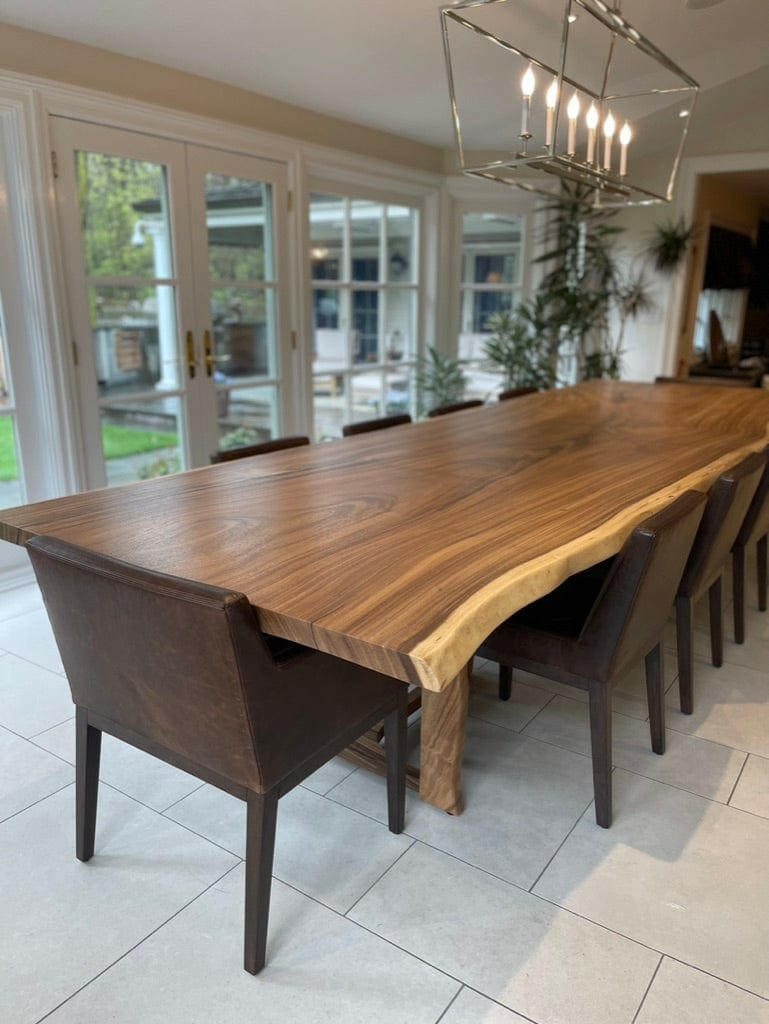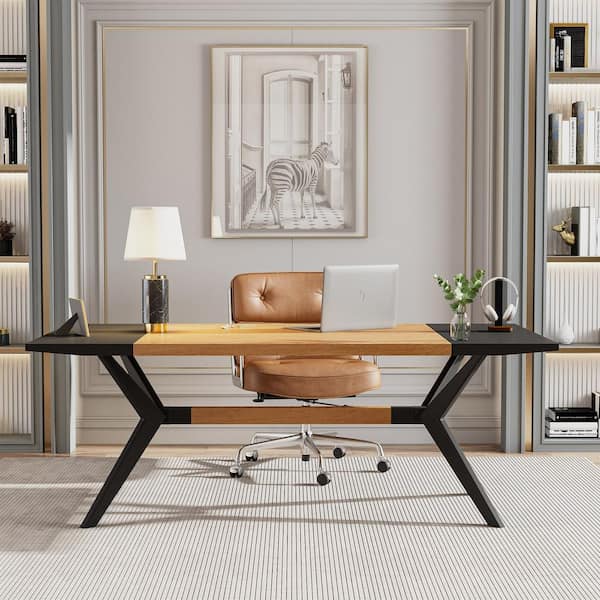Leading Fads in Dining Room Table Legs to Boost Your Eating Room
Choosing the Perfect Table: What Styles Work Best for Your Home?
Choosing the excellent dining table for your home can be a nuanced procedure that balances appearances and functionality. Whether your room leans towards typical style, contemporary minimalism, rustic beauty, or industrial elegant, the range of styles offered can provide to diverse tastes. Each style provides distinct benefits and challenges that can either improve or interrupt your dining location's harmony. Comprehending just how different materials, shapes, and dimensions interact with your existing style is essential. To browse these options effectively and discover a table that genuinely complements your home, take into consideration the following elements thoroughly.
Assessing Your Area
Reviewing the dimensions and layout of your dining area is a critical initial step in selecting the excellent dining table. Begin by determining the size and size of the area, representing entrances, home windows, and various other building features that could influence table placement. This makes sure that your table not only fits however also allows for comfortable activity around it.
Think about the number of people you generally captivate. A table ought to accommodate your family's day-to-day demands while supplying sufficient flexibility for periodic visitors. As a regulation of thumb, allocate at the very least 24 inches of table size each to make certain a comfy dining experience.
It's also important to preserve proper clearance around the table. Ideally, there should be at the very least 36 inches in between the table side and walls or various other furniture, enabling very easy gain access to and movement. For rooms where chairs with arms or additional storage devices like buffets are included, boosting this clearance to 48 inches is suggested.
Illumination and atmosphere play substantial roles too. Make sure that your table straightens with existing lights fixtures or prepare for ample illumination options. This detailed spatial analysis assurances that your table not just fits physically but additionally integrates with your space's overall performance and aesthetic.
Popular Table Styles

Standard table usually feature elaborate information, curved legs, and rich timber coatings, stimulating a feeling of ageless sophistication. They are best for homes with classic style or those looking to add a touch of sophistication to their dining location.
Modern eating tables prioritize simplicity and clean lines, commonly including materials like glass and steel. These tables are suitable for contemporary spaces, supplying a smooth and clean appearance that complements minimal design ideologies.
Rustic table, on the other hand, stress all-natural products and a handmade appearance - dining room table legs. They often include reclaimed wood and a troubled finish, developing a cozy and welcoming ambience. These tables function well in farmhouse-style homes or those looking for a comfortable, natural feel
Industrial dining tables integrate basic materials such as steel and timber, commonly showcasing a practical aesthetic. This design is well-suited for loft spaces or city rooms, adding a touch of sturdy appeal and toughness to the eating experience.
Each style offers distinct benefits, making it necessary to choose one that aligns with your home's overall layout and your individual choices.
Product Options
When picking an eating table, More Info the option of product plays a vital function in identifying both the table's aesthetics and performance. Wood, metal, glass, and composite materials each offer unique benefits and obstacles, making it essential to line up the material with your home's design and way of living requirements.
Timber is a timeless and functional choice, available in selections such as oak, walnut, and mahogany. Known for its toughness and heat, timber complements both conventional and modern insides. However, it needs normal maintenance to stop scrapes and warping.
Steel tables, typically crafted from stainless-steel, aluminum, or functioned iron, are praised for their contemporary appeal and toughness. They are particularly suited for industrial or minimal setups however can be susceptible to damages and might really feel chilly to the touch.
Glass table bring an air of beauty and visibility, perfect for smaller sized areas as they develop an impression of even more space. While easy to clean, glass can be prone to spots and needs cautious managing to prevent chips and fractures.
Composite materials, such as MDF and plywood, offer cost-efficient and customizable options, though they might do not have the longevity of all-natural products. Picking the ideal material ensures your table is both a functional possession and a visual delight.
Forming and Size Factors To Consider
After determining the ideal material for your eating table, the next consideration is selecting the best shape and size to suit your space. On the other hand, round tables promote a feeling of intimacy and are excellent for smaller sized dining locations, encouraging discussion by getting rid of edges and making every person feel just as consisted of.
Size is similarly crucial and must be dictated by both the space's dimensions and the number of people you plan to seat regularly. Generally of thumb, allot a minimum of 24 inches of table size each to make certain comfortable eating. Furthermore, consider the table's clearance space: there should go to the very least 36 inches between the table edge and the wall surfaces or other furniture. This ensures that diners can move easily without really feeling cramped. Extending tables use adaptability if you frequently organize bigger celebrations, supplying additional seats when required without occupying additional room daily. Selecting the right form and dimension makes sure both practicality and visual consistency in your dining location.
Matching Your Decor
Picking a table that integrates with your existing decoration is crucial in producing a cohesive and welcoming area. Begin by evaluating your current interior layout style, whether it be modern, conventional, rustic, or diverse. The dining table must enhance the overall aesthetic, not contend with it. A sleek, minimalist table with clean lines is suitable for a contemporary home, while a vintage, ornate table matches a much more typical setup.
Shade and material are just as considerable. If your decor includes cozy tones and all-natural materials, think find out about a wood table to enhance the natural feeling. Alternatively, a glass or steel table may be extra proper in a space dominated by great colors and industrial elements. Take notice of the coating, as it ought to mirror other furnishings and fixtures to preserve consistency.
Texture plays an essential role. A rough-hewn, redeemed timber table can add personality to a rustic space, while a polished marble surface area can boost a glamorous dining location. Lastly, think about the scale and percentage of the table in regard to the area size and existing furniture. A well-matched table not just boosts visual allure however also improves the overall eating experience.

Verdict
Choosing the suitable eating table requires cautious factor to consider of room, design, materials, shape, and size (dining room table legs). websites Typical tables enhance traditional interiors with rich wood surfaces, while modern-day tables match modern setups through glass and metal. Rustic designs introduce heat using natural materials, and industrial styles improve metropolitan atmospheres with raw components. Integrating the eating table with existing decor makes sure both functionality and visual appeal, adding to a cohesive and aesthetically pleasing dining area.